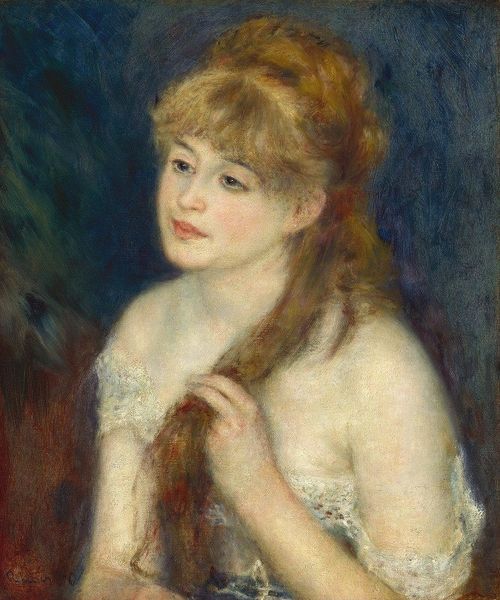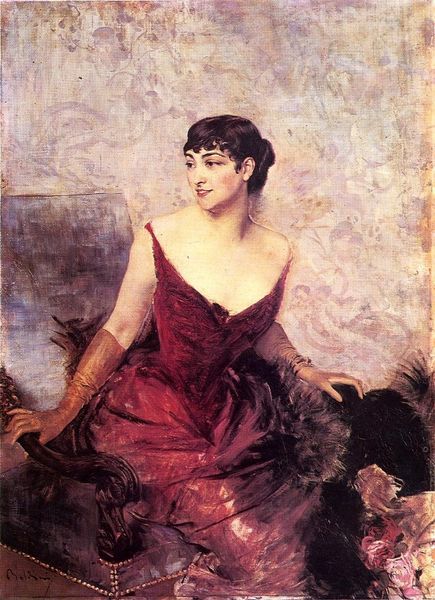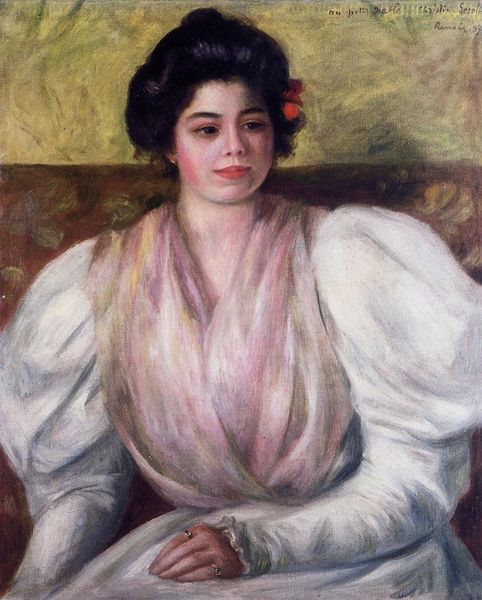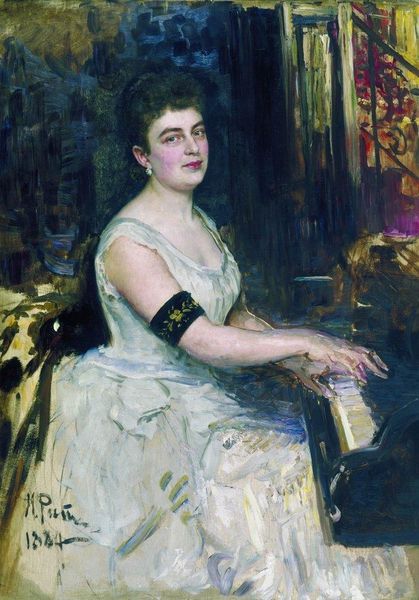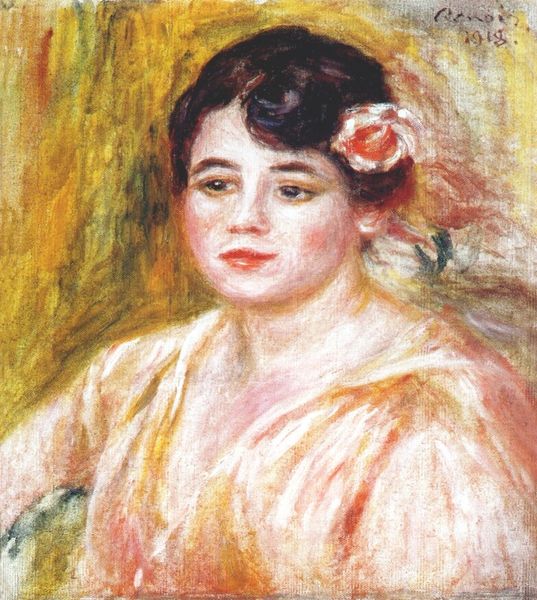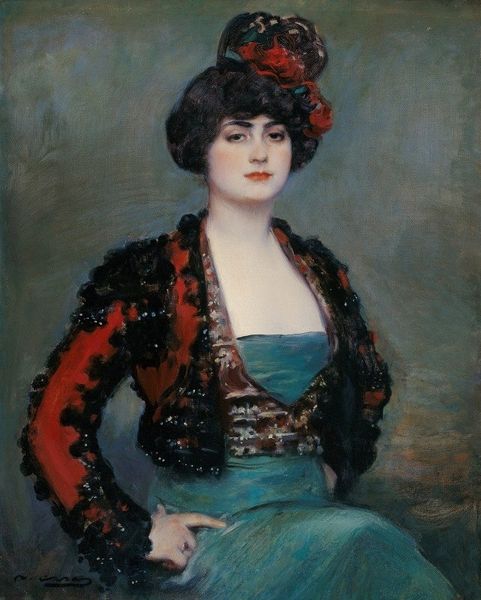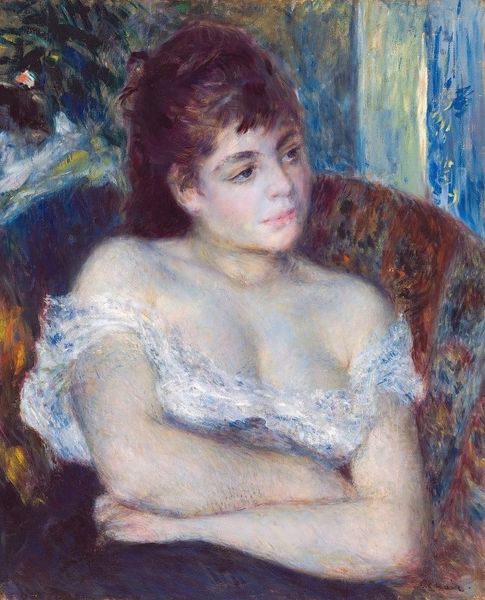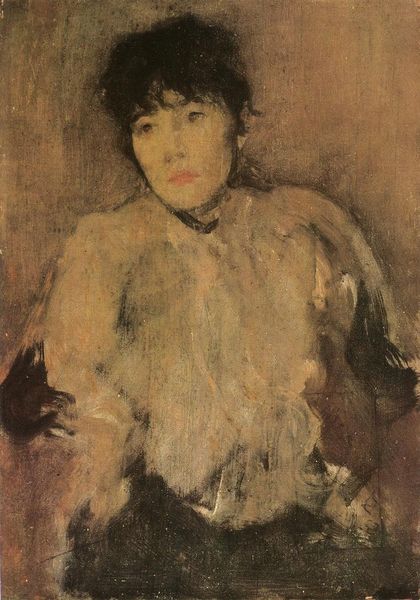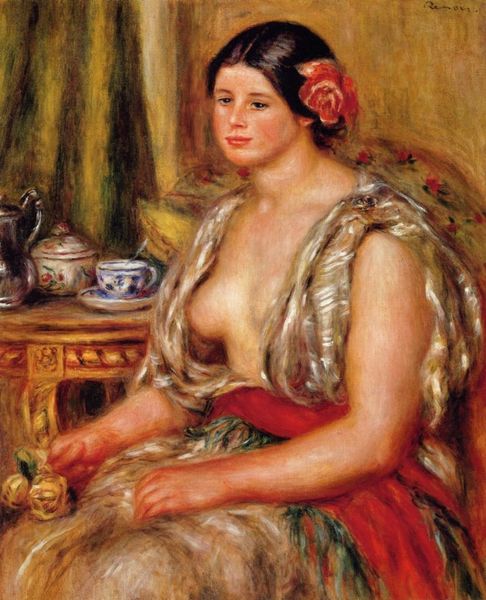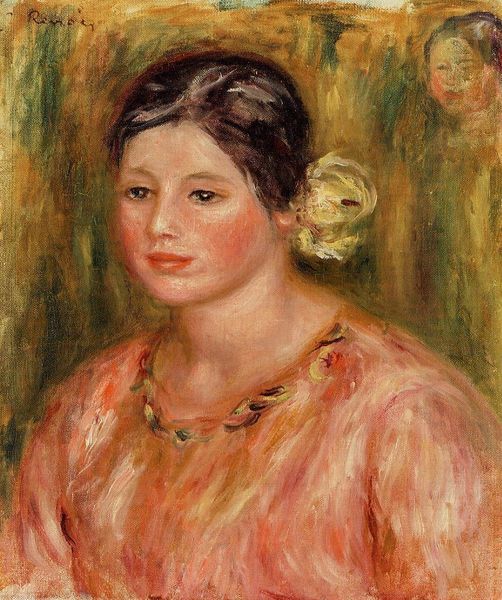
Copyright: Public domain
Editor: Here we have Renoir's "Misia", painted in 1904 using oil paint. It has a really intimate feel; she seems caught in a private moment of contemplation. How do you interpret this work? Curator: What strikes me is how Renoir portrays Misia Natanson, a woman of considerable influence in Parisian artistic circles at the time. Her salons fostered intense intellectual debates on culture and politics. The painting’s apparent tranquility might belie the dynamism she represented within the male-dominated art world. Editor: That’s interesting. I was focusing more on the softness of the colors and brushstrokes, almost a romantic aesthetic. Curator: Indeed, Renoir employs the Impressionist technique to great effect. However, consider how his style, while seemingly apolitical, upholds or subverts the typical portrayal of women in that era. Is this simply a depiction of beauty, or does it offer a more nuanced understanding of a woman's role in shaping cultural discourse? Editor: So, by "nuanced understanding," do you mean thinking about her intellectual contribution to society despite the restrictive norms for women at that time? Curator: Precisely. And consider also the male gaze inherent in such portraits. While Renoir’s brushstrokes caress her form, it also positions her as an object of aesthetic admiration. How do we reconcile her agency as an intellectual force with her representation within a patriarchal structure? Editor: I see. Looking at it now, I'm thinking beyond the surface beauty of the painting. It highlights the constant negotiation women faced. Thank you. Curator: Absolutely. Art offers profound entry points into critical societal questions, even with seemingly simple portraits like this.
Comments
No comments
Be the first to comment and join the conversation on the ultimate creative platform.


